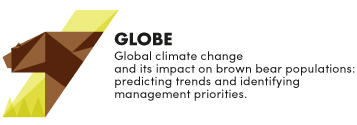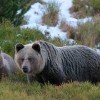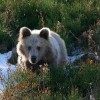Stress is a measure of an animal response (behavioral and physiological) to changes in its environment. It can be measured directly by looking at changes in concentrations of glucocorticoids (GC, e.g. cortisol). This is the focus of recently wide developed and successfully used endocrinology methods in conservation-related field research. The primary role of GCs is basic energy regulation. At low and moderate levels GCs influence feeding and act on the liver, adipose tissue and muscle to maintain circulation of adequate portions of glucose and fatty acids. They can be modulatory on a seasonal basis in response to predictable changes in the animal’s balance between required energy and the energy available in the environment. When an animal encounters an unexpected challenge, it enters a state of stress with GCs raising and initiating physiological and behavioral changes to cope with the challenge. If the situation is prolonged and GCs remain high inducing chronic stress, it can become detrimental to health and fitness and decrease animal’s ability to cope with additional stressors.

Stress can be measured by GCs concentrations in the blood plasma, urine, hairs and feces. In our study we will focus on hair and feces that can be obtained non-invasively and validations of the methods for the species were already successfully done. The GCs metabolites levels in bear feces show short-term stress - possible stressful events that happened 12-16 hours before defecation. The samples will be stored frozen, and then established methods for extraction of corticosteroids and employing the group-specific polyclonal antibodies will be used for analysis. To obtain the picture of long-term stress, the level of cortisol in hairs will be analyzed with the same method as for feces. Cortisol in hairs is already proved to be a reliable indicator of long-term stress also in bears and reflects the challenges of the season in which hairs grow. In some cases, metabolites of testosterone, estradiol and progesterone will be also measured. The results will be then related to climate and environmental correlates in the study areas.
By combining the results from “long-term stress” measures (using hair cortisol concentrations as describe above) and “short-term stress” (using glucocorticoid concentration in fecal samples) we are going to assess how human disturbance and activities mediate climate-induced effects on physiological stress levels of brown bears. We will also investigate individual differences in cortisol concentrations in relation to features of the individual home range (e.g. habitat fragmentation, level of human pressure or urbanization, portion of protected landscape). We aim also to explore the link between stress levels and brown bear winter and foraging ecology. We will investigate whether climate change and related changes in food availability and winter activity are reflected in hair cortisol levels.





















